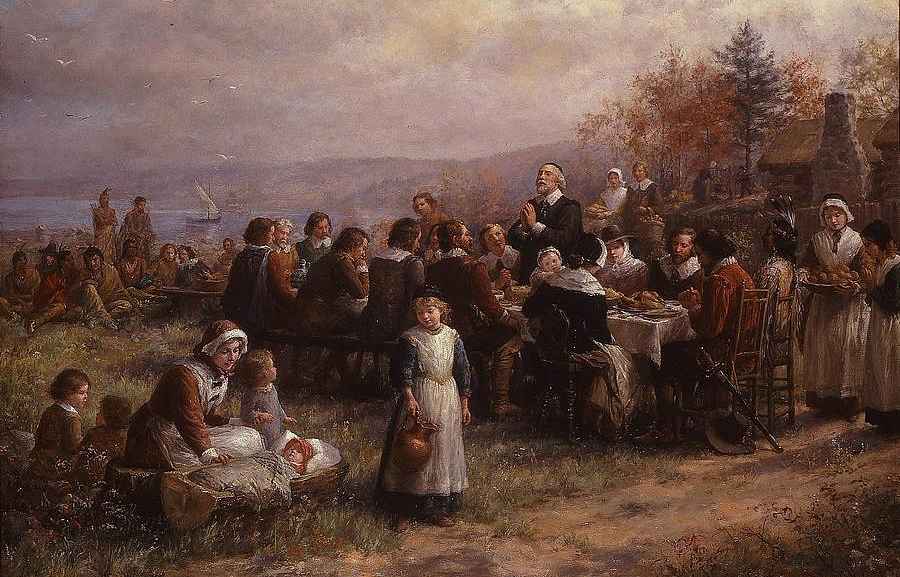
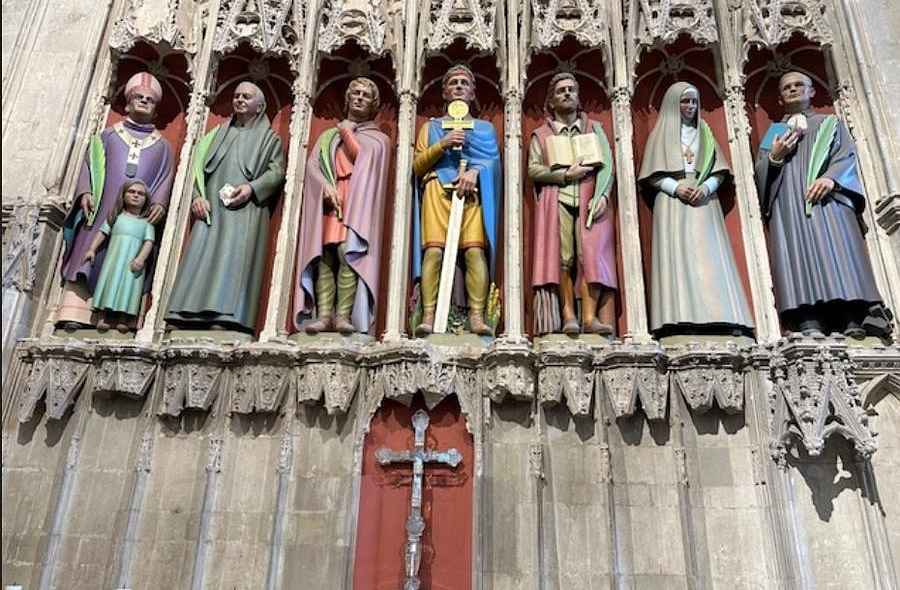
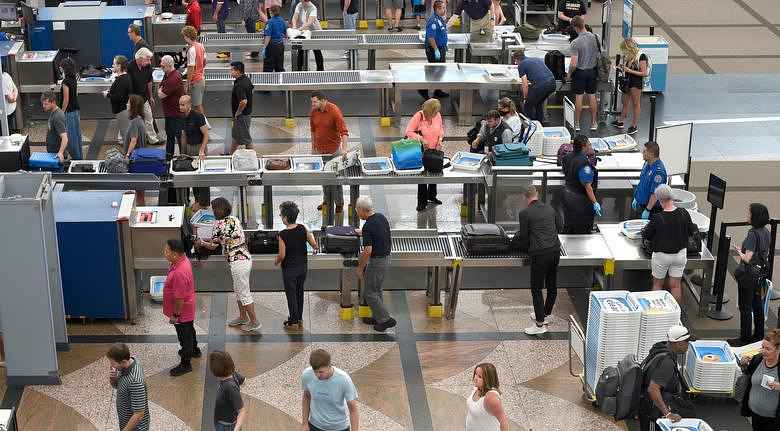
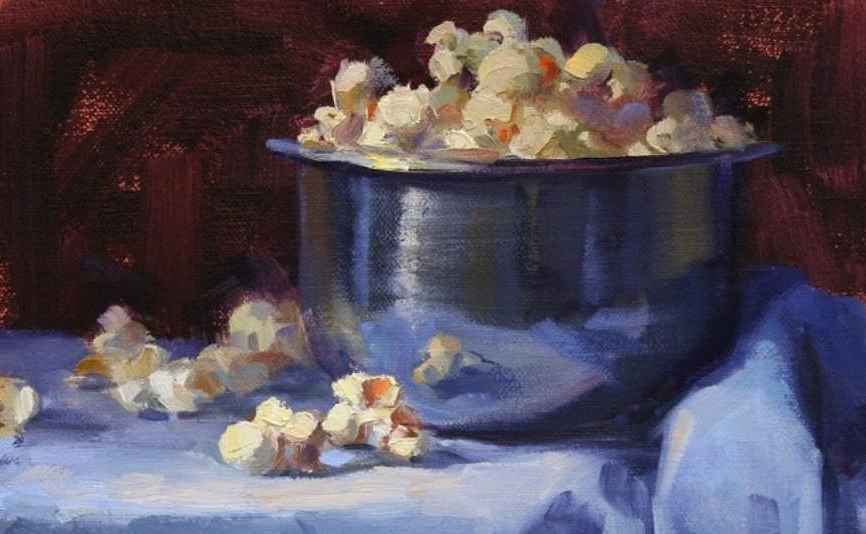
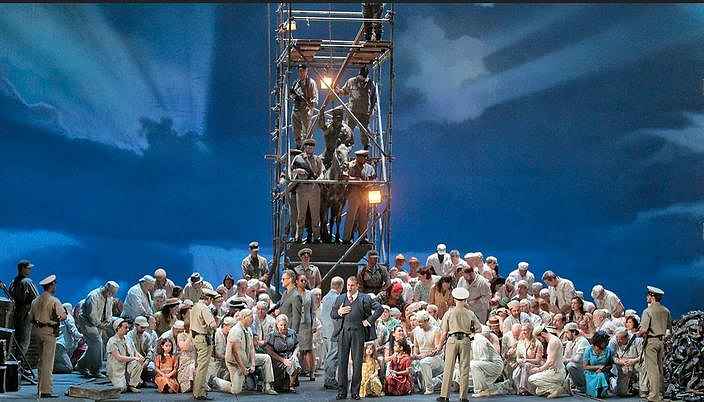
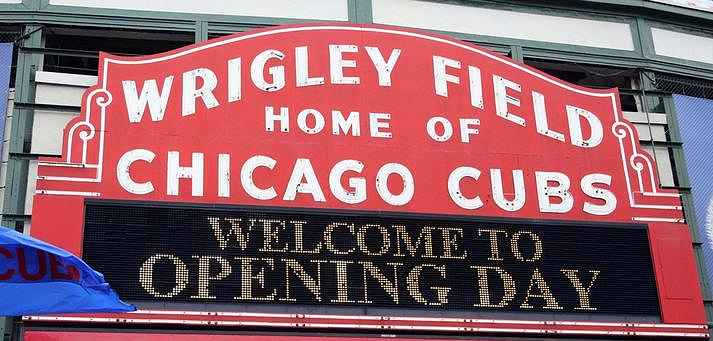
See listing of Recent and Most Popular articles on the Home Page
My World
Category: Holidays / Topics: Food & Nuitrition • History • Holidays • Holiday Season • Thanks, Thankfulness, Thanksgiving
What Was on the Menu at the First Thanksgiving?
by Megan Gambino / Smithsonian.com
Posted: November 25, 2021
The history of the holiday meals tells us that turkey was always the centerpiece, but other courses have since disappeared and much of our tradition today had not yet appeared…
Editor's Note: The following originally appeared on Smithsonian.com. We saw it on Pocket, a feature of the Firefox browser.
About the image: A traditional Thanksgiving dinner includes turkey, stuffing and mashed potatoes but the First Thanksgiving likely included wildfowl, corn, porridge and venison. Credit: Jennie Augusta Brownscombe / National Museum of Women in the Arts / Wikimedia Commons / Public domain.
Today, the traditional Thanksgiving dinner includes any number of dishes: turkey, stuffing, mashed potatoes, candied yams, cranberry sauce and pumpkin pie. But if one were to create a historically accurate feast, consisting of only those foods that historians are certain were served at the so-called “first Thanksgiving,” there would be slimmer pickings. “Wildfowl was there. Corn, in grain form for bread or for porridge, was there. Venison was there,” says Kathleen Wall. “These are absolutes.”
Two primary sources—the only surviving documents that reference the meal—confirm that these staples were part of the harvest celebration shared by the Pilgrims and Wampanoag at Plymouth Colony in 1621. Edward Winslow, an English leader who attended, wrote home to a friend:
“Our harvest being gotten in, our governor sent four men on fowling, that so we might after a special manner rejoice together after we had gathered the fruit of our labors. They four in one day killed as much fowl as, with a little help beside, served the company almost a week. At which time, amongst other recreations, we exercised our arms, many of the Indians coming amongst us, and among the rest their greatest king Massasoit, with some ninety men, whom for three days we entertained and feasted, and they went out and killed five deer, which they brought to the plantation and bestowed on our governor, and upon the captain and others.”
William Bradford, the governor Winslow mentions, also described the autumn of 1621, adding, “And besides waterfowl there was great store of wild turkeys, of which they took many, besides venison, etc. Besides, they had about a peck a meal a week to a person, or now since harvest, Indian corn to that proportion.”
But determining what else the colonists and Wampanoag might have eaten at the 17th-century feast takes some digging. To form educated guesses, Wall, a foodways culinarian at Plimoth Plantation, a living history museum in Plymouth, Massachusetts, studies cookbooks and descriptions of gardens from the period, archaeological remains such as pollen samples that might clue her in to what the colonists were growing.
Our discussion begins with the bird. Turkey was not the centerpiece of the meal, as it is today, explains Wall. Though it is possible the colonists and American Indians cooked wild turkey, she suspects that goose or duck was the wildfowl of choice. In her research, she has found that swan and passenger pigeons would have been available as well. “Passenger pigeons—extinct in the wild for over a century now—were so thick in the 1620s, they said you could hear them a quarter-hour before you saw them,” says Wall. “They say a man could shoot at the birds in flight and bring down 200.”
Small birds were often spit-roasted, while larger birds were boiled. “I also think some birds—in a lot of recipes you see this—were boiled first, then roasted to finish them off. Or things are roasted first and then boiled,” says Wall. “The early roasting gives them nicer flavor, sort of caramelizes them on the outside and makes the broth darker.”
It is possible that the birds were stuffed, though probably not with bread. (Bread, made from maize not wheat, was likely a part of the meal, but exactly how it was made is unknown.) The Pilgrims instead stuffed birds with chunks of onion and herbs. “There is a wonderful stuffing for goose in the 17th-century that is just shelled chestnuts,” says Wall. “I am thinking of that right now, and it is sounding very nice.” Since the first Thanksgiving was a three-day celebration, she adds, “I have no doubt whatsoever that birds that are roasted one day, the remains of them are all thrown in a pot and boiled up to make broth the next day. That broth thickened with grain to make a pottage.”
In addition to wildfowl and deer, the colonists and Wampanoag probably ate eels and shellfish, such as lobster, clams and mussels. “They were drying shellfish and smoking other sorts of fish,” says Wall.
According to the culinarian, the Wampanoag, like most eastern woodlands people, had a “varied and extremely good diet.” The forest provided chestnuts, walnuts and beechnuts. “They grew flint corn (multicolored Indian corn), and that was their staple. They grew beans, which they used from when they were small and green until when they were mature,” says Wall. “They also had different sorts of pumpkins or squashes.”
As we are taught in school, the Indians showed the colonists how to plant native crops. “The English colonists plant gardens in March of 1620 and 1621,” says Wall. “We don’t know exactly what’s in those gardens. But in later sources, they talk about turnips, carrots, onions, garlic and pumpkins as the sorts of things that they were growing.”
Of course, to some extent, the exercise of reimagining the spread of food at the 1621 celebration becomes a process of elimination. “You look at what an English celebration in England is at this time. What are the things on the table? You see lots of pies in the first course and in the second course, meat and fish pies. To cook a turkey in a pie was not terribly uncommon,” says Wall. “But it is like, no, the pastry isn’t there.” The colonists did not have butter and wheat flour to make crusts for pies and tarts. (That’s right: No pumpkin pie!) “That is a blank in the table, for an English eye. So what are they putting on instead? I think meat, meat and more meat,” says Wall.
Meat without potatoes, that is. White potatoes, originating in South America, and sweet potatoes, from the Caribbean, had yet to infiltrate North America. Also, there would have been no cranberry sauce. It would be another 50 years before an Englishman wrote about boiling cranberries and sugar into a “Sauce to eat with. . . .Meat.” Says Wall: “If there was beer, there were only a couple of gallons for 150 people for three days.” She thinks that to wash it all down the English and Wampanoag drank water.
All this, naturally, begs a follow-up question. So how did the Thanksgiving menu evolve into what it is today?
Wall explains that the Thanksgiving holiday, as we know it, took root in the mid-19th century. At this time, Edward Winslow’s letter, printed in a pamphlet called Mourt’s Relation, and Governor Bradford’s manuscript, titled Of Plimoth Plantation, were rediscovered and published. Boston clergyman Alexander Young printed Winslow’s letter in his Chronicles of the Pilgrim Fathers, and in the footnotes to the resurrected letter, he somewhat arbitrarily declared the feast the first Thanksgiving. (Wall and others at Plimoth Plantation prefer to call it “the harvest celebration in 1621.”) There was nostalgia for colonial times, and by the 1850s, most states and territories were celebrating Thanksgiving.
Sarah Josepha Hale, editor of the popular women’s magazine Godey’s Lady’s Book, a real trendsetter for running a household, was a leading voice in establishing Thanksgiving as an annual event. Beginning in 1827, Hale petitioned 13 presidents, the last of whom was Abraham Lincoln. She pitched her idea to President Lincoln as a way to unite the country in the midst of the Civil War, and, in 1863, he made Thanksgiving a national holiday.
Throughout her campaign, Hale printed Thanksgiving recipes and menus in Godey’s Lady’s Book. She also published close to a dozen cookbooks. “She is really planting this idea in the heads of lots of women that this is something they should want to do,” says Wall. “So when there finally is a national day of Thanksgiving, there is a whole body of women who are ready for it, who know what to do because she told them. A lot of the food that we think of—roast turkey with sage dressing, creamed onions, mashed turnips, even some of the mashed potato dishes, which were kind of exotic then—are there.”
Megan Gambino is an editor and writer for Smithsonian.com and founded “Document Deep Dive.” Previously, she worked for Outside magazine in New Mexico.
Search all articles by Megan Gambino
Posted: November 25, 2021 Accessed 324 times
![]() Go to the list of most recent My World Articles
Go to the list of most recent My World Articles
![]() Search My World (You can expand the search to the entire site)
Search My World (You can expand the search to the entire site)
![]() Go to the list of Most Recent and Most Popular Articles across the site (Home Page)
Go to the list of Most Recent and Most Popular Articles across the site (Home Page)
 Loading requested view...
Loading requested view...